¶ Applicable models of printers
AMS 2 Pro (Hereinafter referred to as AMS)
¶ AMS 2 Pro Mainboard
The AMS mainboard is the core power board of AMS. It provides a series of connectors through which various functional components are connected.
 |
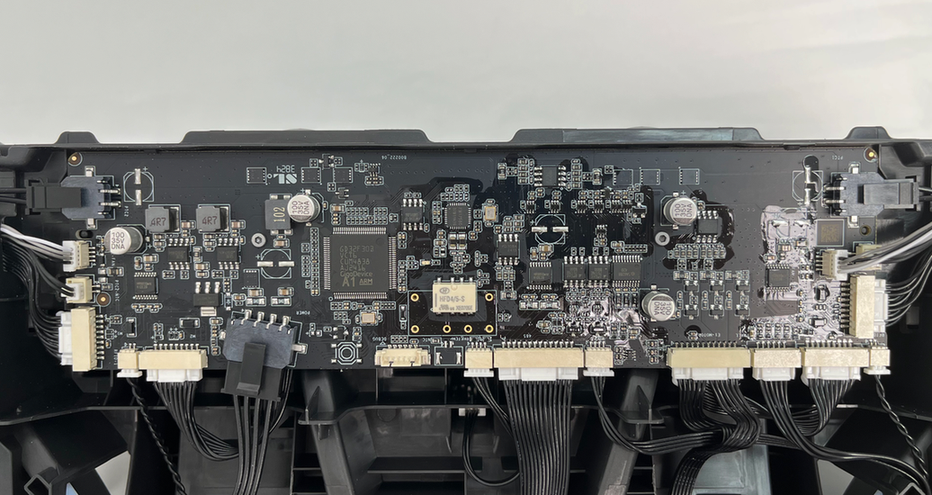 |
¶ When to use?
When faults such as abnormal AMS mainboard voltage, abnormal heating or burning of components, abnormal communication between modules, damaged connectors, and irreversible firmware upgrade failure occur, the AMS mainboard may need to be replaced.
¶ Tools and materials needed
-
New AMS 2 Pro Power Board
-
H2.0 Allen key
-
H1.5 Allen key
-
30 minutes
¶ Screws List
¶ Safety Warning
IMPORTANT!
It's crucial to power off the printer before conducting any maintenance work, including work on the printer's electronics and tool head wires. Performing tasks with the printer on can result in a short circuit, leading to electronic damage and safety hazards.
During maintenance or troubleshooting, you may need to disassemble parts, including the hotend. This exposes wires and electrical components that could short circuit if they contact each other, other metal, or electronic components while the printer is still on. This can result in damage to the printer's electronics and additional issues.
Therefore, it's crucial to turn off the printer and disconnect it from the power source before conducting any maintenance. This prevents short circuits or damage to the printer's electronics, ensuring safe and effective maintenance. For any concerns or questions about following this guide, we recommend submitting a technical ticket regarding your issue and we will do our best to respond promptly and provide the assistance you need.
Before starting, make sure the AMS is disconnected from the printer.
¶ Remove the mainboard
¶ Step 1 - Remove the PTFE tube on the back of the AMS
Press the PTFE tube release button from the back of the AMS to unlock the fitting, then pull the PTFE tube out from the back of the AMS.

¶ Step 2 - Pull out the PTFE tube release button
Pinch the clip from the inside of the lower cover to automatically pop open the PTFE tube release button, and then pull out the PTFE tube release button from the back of the AMS.
 |
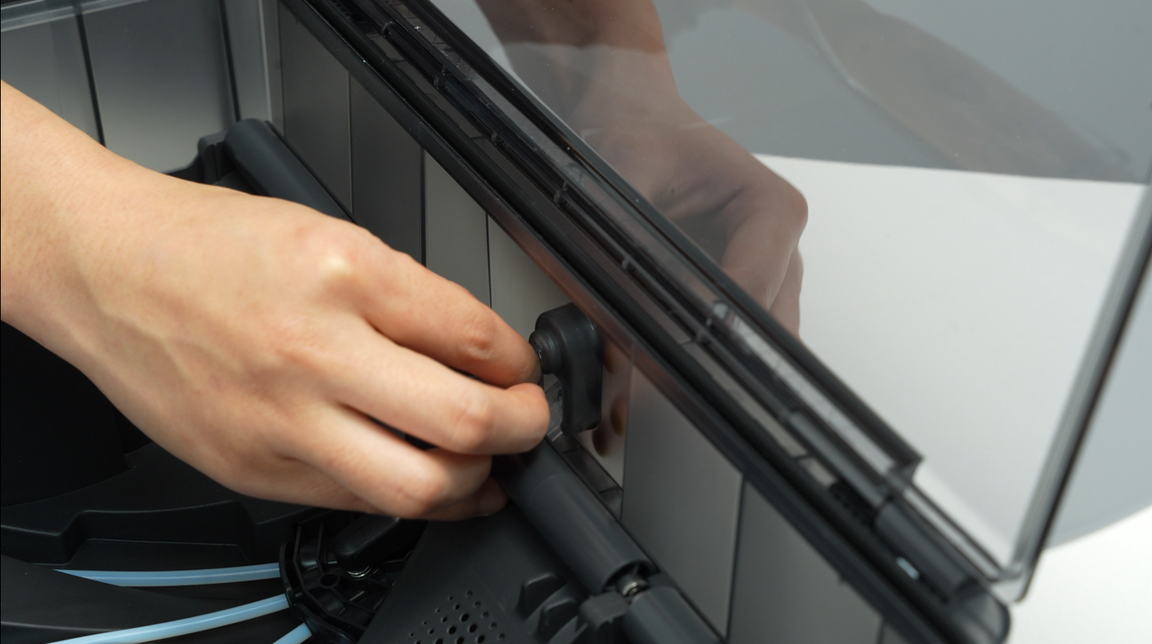 |
When squeezing the buckle, use your other hand to hold the PTFE tube from the back of the AMS to release the switch to prevent the spring from being ejected and lost.
¶ Step 3 - Remove the AMS main frame assembly
Remove the driven support sleeve assembly of the two middle slots to expose the two screw holes. When removing the bearing sleeve, be careful with the bearings at both ends to avoid losing them.
 |
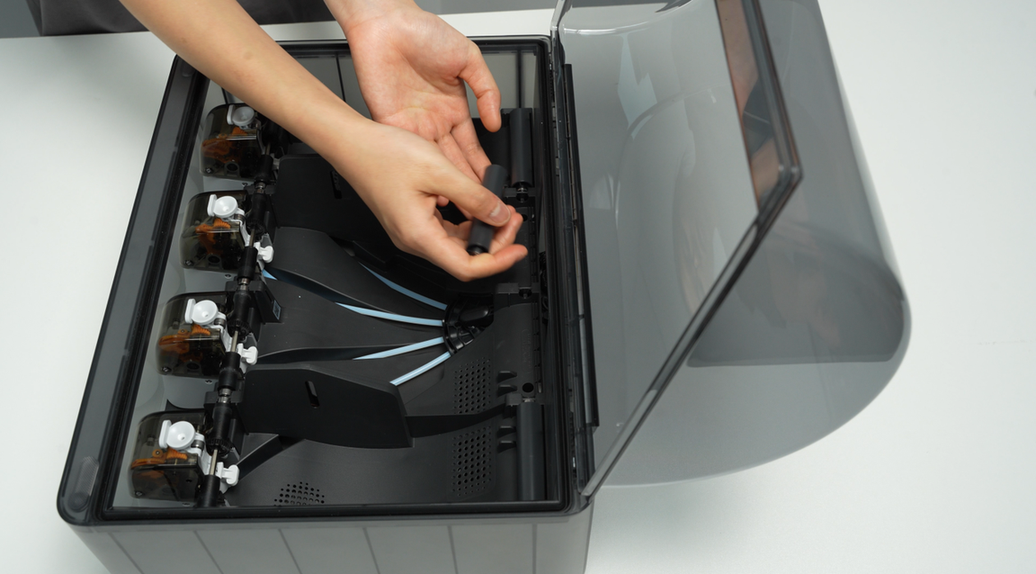 |
Remove the two screws A that secure the AMS main frame.
 |
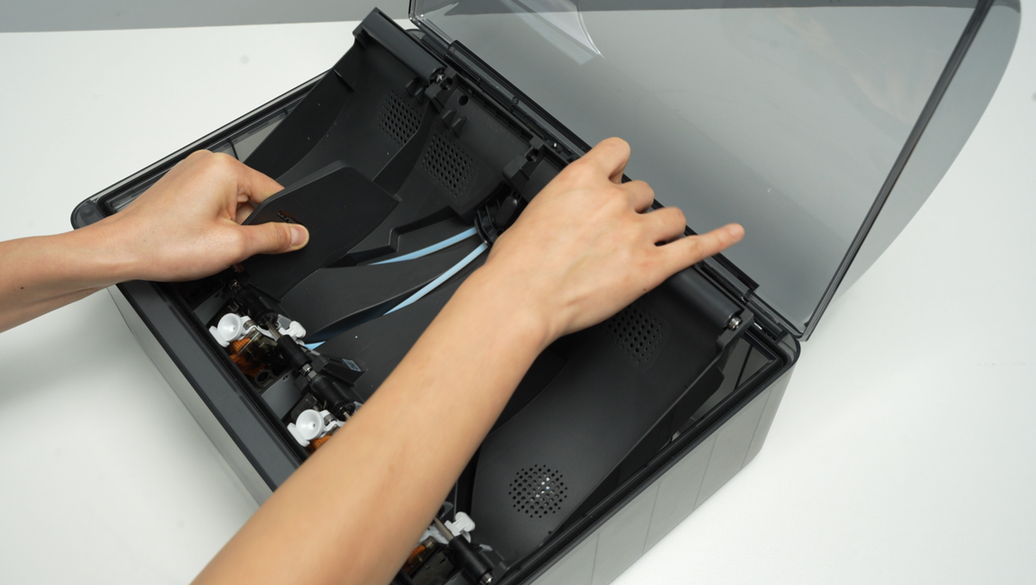 |
Lift the rear part of the main frame completely and place it vertically on the lower cover of the AMS. Note that there are cables connected, so do not operate violently. When lifting, it is recommended to lift the front part of the main frame first, and then push it forward to make room for the rear part of the frame.
When placing the AMS main frame vertically, avoid the electronic components of the vent to prevent them from being crushed.
 |
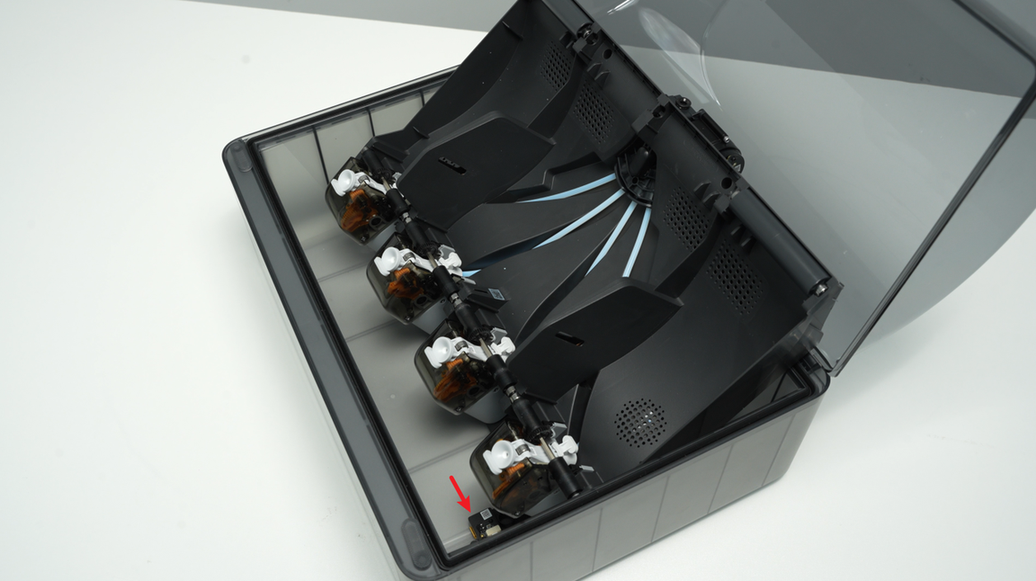 |
Unlock the plug buckle, unplug the signal cable and power cable on the AMS power board, and lift out the AMS main frame assembly as a whole.
 |
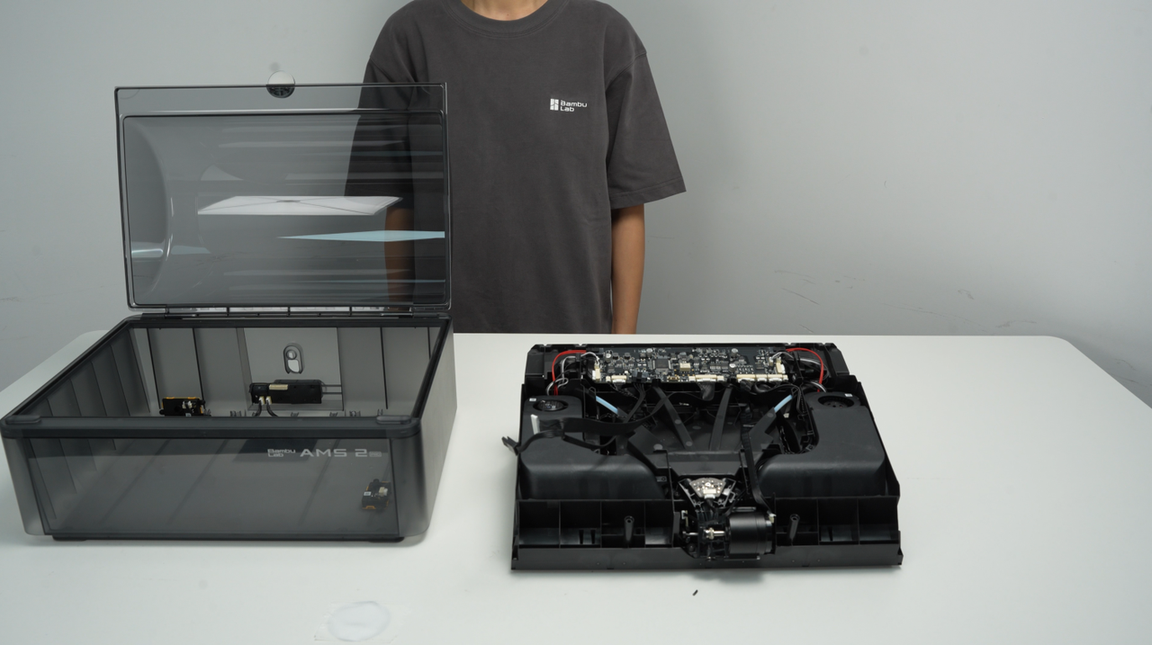 |
¶ Step 4 - Disconnect 18 cables
Unplug all cables from their connectors on the mainboard. It is recommended to mark the cables or take a photo of the connections to avoid mistakes when rewiring them later.

¶ Step 5 - Remove the mainboard
The AMS mainboard is fixed by 2 screws and 6 clips.
After removing the 2 screws, lift the AMS mainboard from the bottom, squeeze the leftmost clip outward, and then remove the AMS mainboard.
 |
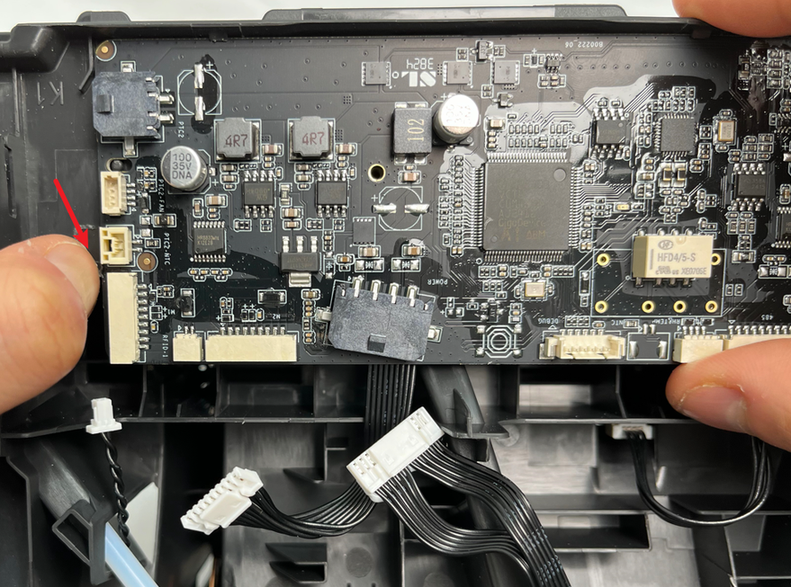 |
¶ Install the mainboard
¶ Step 1 - Install the mainboard
Install the mainboard on the AMS main frame. First, insert the AMS mainboard into the 3 clips on the upper edge from bottom to top, then press it down slightly and insert it into the 2 clips on the left and right.
Friendly reminder: When installing the AMS mainboard, pay attention to checking the plug and do not press the plug on the back of the mainboard.
In this step, do not lock the 2 screws of the mainboard. After all the plugs are inserted in the next step, lock the screws.
 Pre-clipped into the top 3 clips Pre-clipped into the top 3 clips |
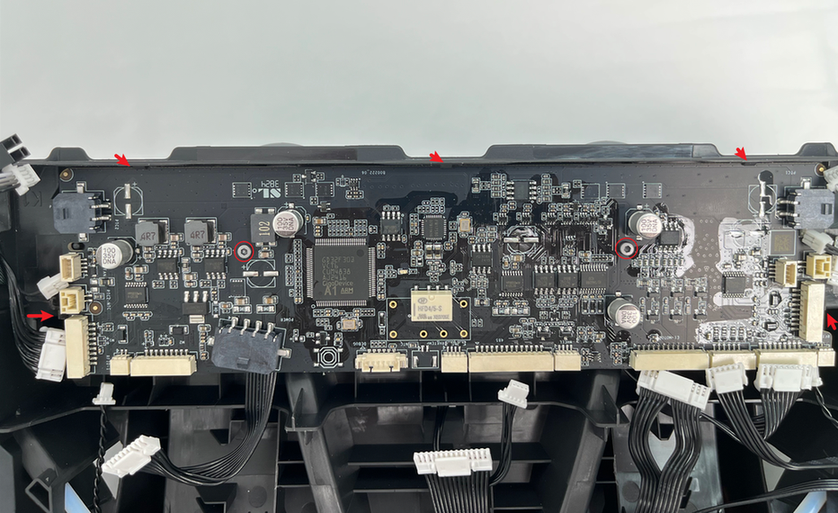 |
¶ Step 2 - Connect 18 cables
Connect 18 cables according to the marks or photos before disconnection. After confirming that the mainboard is installed and pressed by 5 clips, lock 2 screws.
Tips: Please check to make sure that each plug is inserted in place. For example, there will be a click sound after the feeder plugs are inserted in place, so as to avoid abnormal operation of AMS after power-on.

| No. | Connection Object | No. | Connection Object | No. | Connection Object |
|---|---|---|---|---|---|
| 1 | Heating unit heater (1&2 slots) | 7 | AMS power board (power cable) | 13 | Feeder unit 3 |
| 2 | Heating unit fan (1&2 slots) | 8 | Temperature and humidity sensor | 14 | RFID coil 2 |
| 3 | Heating unit NTC (1&2 slots) | 9 | AMS power board (485 communication cable) | 15 | Feeder unit 4 |
| 4 | Feeder unit 1 | 10 | Filament hub odometer | 16 | Heating unit fan (3&4 slots) |
| 5 | RFID coil 1 | 11 | Filament hub | 17 | Heating unit NTC(3&4 slots) |
| 6 | Feeder unit 2 | 12 | Filament sensor | 18 | Heating unit heater (3&4 slots) |
¶ Step 3 - Install the main frame assembly and driven support sleeve assembly
Install the AMS main frame assembly into the AMS lower cover and connect the signal cable and power cable to the AMS power board.
 |
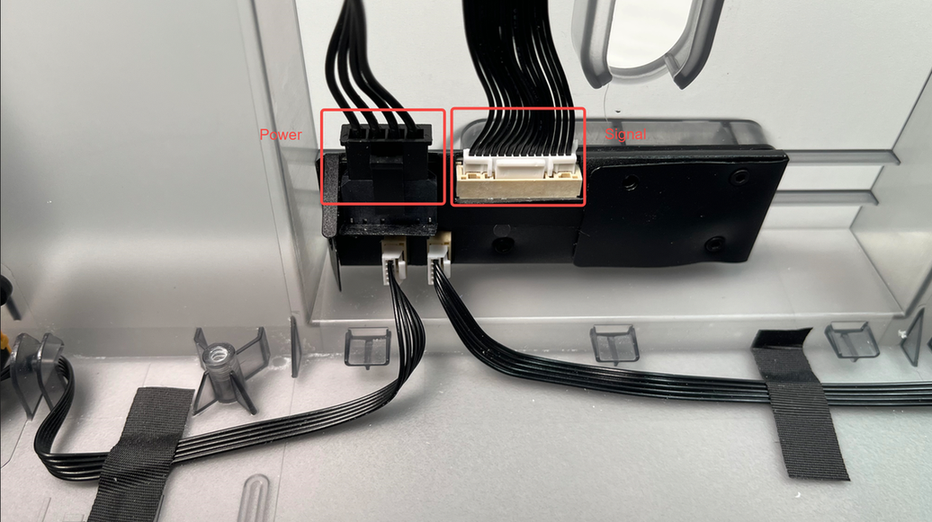 |
Align the tabs of the bottom cover unit with the slots of the middle frame, and then insert and install.

After the AMS main frame is installed in place, tighten the two screws to secure it.

Install the two middle driven support sleeve assemblies, making sure that the bearings on both ends of all support shafts are pressed into place.
 |
 |
¶ Step 4 - Install the PTFE tube release button
Press the PTFE tube release button back into the housing in the following direction, insert the buckle into the corresponding slot smoothly, and keep the black silicone housing embedded flat.
 |
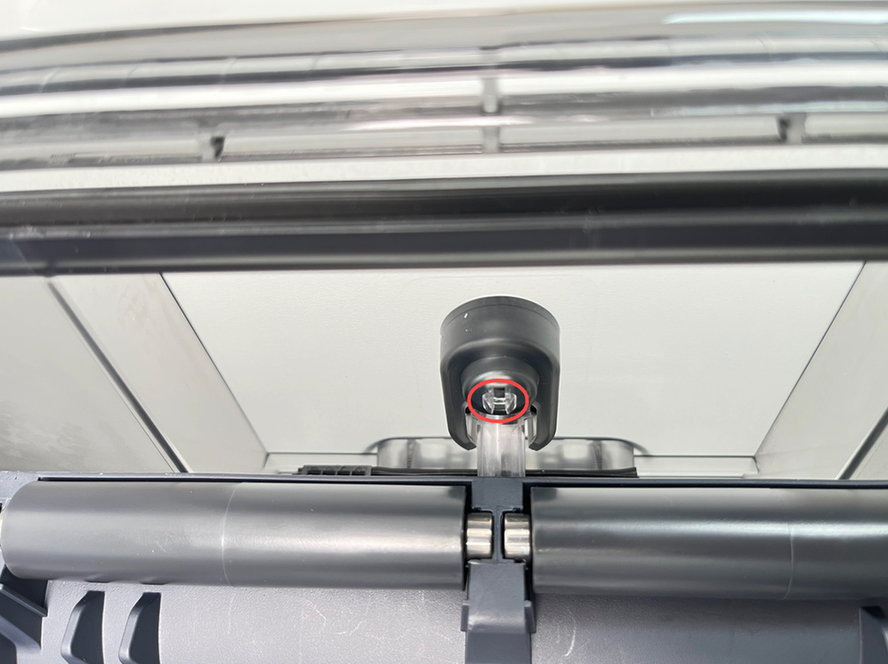 |
 |
¶ Step 5 - Connect the PTFE tube
Check to make sure that the PTFE tube silicone bracket is aligned with the filament hole of the filament hub unit, and push the PTFE tube from the rear of the AMS. After installation, pull the PTFE tube to confirm that the PTFE tube is fixed.
 |
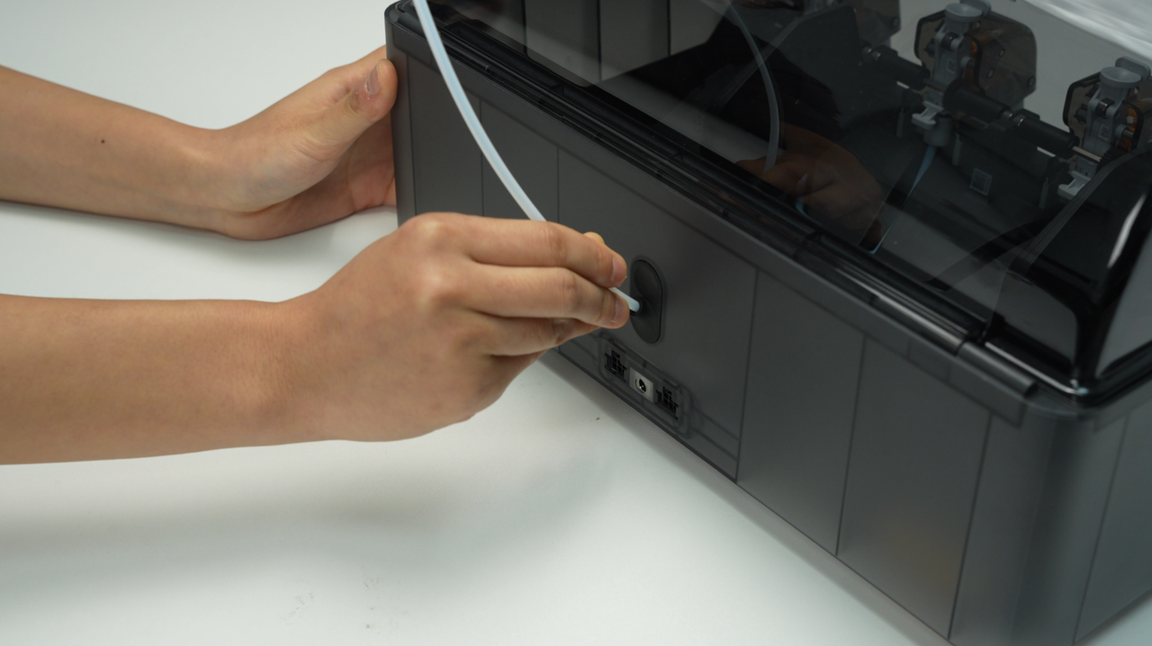 |
¶ Calibration
Connect the power cable, connect the AMS to the printer, turn on the power, and start using the AMS to load filaments through the operation on the screen. If the loading can be completed and no error prompts appear during the entire loading process, the replacement is successful.
Otherwise, please check all connections and try again. If the problem persists, please contact Bambu Lab service team for further assistance.
¶ End Notes
We hope the detailed guide provided has been helpful and informative.
If this guide does not solve your problem, please submit a technical ticket, we will answer your questions and provide assistance.
If you have any suggestions or feedback on this Wiki, please leave a message in the comment area. Thank you for your support and attention!